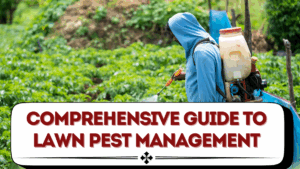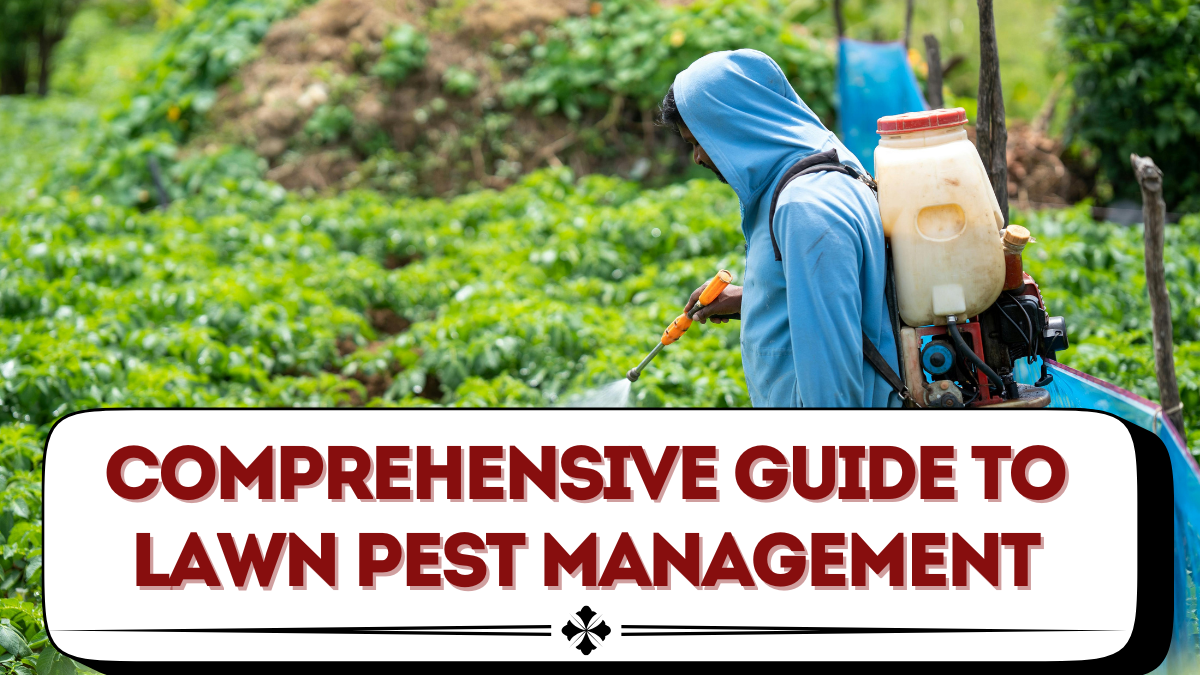A lush green lawn is a source of pride for homeowners, but it is also highly vulnerable to pests. From grubs feeding on roots to chinch bugs damaging blades, these tiny invaders can destroy months of hard work in a matter of weeks. Effective lawn pest management is about more than just spraying chemicals; it requires understanding the pests, their life cycles, and the safest control methods.
This detailed guide covers how to identify common lawn pests, prevent infestations, and use both natural and chemical solutions to protect your turf throughout the year.

Why Lawn Pest Management is Essential
Pests can cause damage that is not immediately visible, making early detection critical. Grubs, for example, eat grass roots beneath the surface, leading to brown patches and spongy soil. Other pests like armyworms feed directly on blades, leaving bare patches behind. Left untreated, infestations weaken lawns, making them more vulnerable to weeds and diseases.
Proper pest control not only restores lawn health but also improves soil quality and prevents costly reseeding or replacement. By adopting a proactive approach, homeowners can ensure their lawns remain green and resilient against seasonal pest attacks.
Identifying Common Lawn Pests
The first step in pest management is recognizing the culprits. Different pests leave different signs, and quick identification allows for faster treatment.
Most common lawn pests include:
-
White Grubs – Feed on roots, causing loose turf that can be rolled back like a carpet.
-
Chinch Bugs – Suck sap from blades, leaving yellow or brown patches.
-
Armyworms – Chew through grass blades in large groups, leaving bare spots.
-
Sod Webworms – Create silken tunnels in soil and feed on grass leaves at night.
-
Mole Crickets – Burrow through soil, damaging roots and causing uneven ground.
Learning to spot these signs early can prevent minor issues from escalating into widespread lawn damage.
Natural Pest Control Methods
Eco-friendly solutions are growing in popularity as homeowners look for safer alternatives to chemical insecticides. Natural pest control methods not only protect lawns but also preserve beneficial insects like pollinators.
Popular natural methods include:
-
Nematodes – Beneficial microscopic worms that target grubs without harming grass.
-
Neem Oil – A natural pesticide that disrupts insect life cycles.
-
Diatomaceous Earth – A powder that dehydrates soft-bodied insects.
-
Encouraging Birds – Installing bird feeders attracts pest-eating species.
-
Proper Lawn Maintenance – Regular mowing, aeration, and dethatching reduce pest-friendly environments.
These methods are particularly useful for small infestations and ongoing prevention.
Chemical Control Options
Sometimes infestations require stronger action, and chemical control becomes necessary. The key is to choose the right product and apply it responsibly.
Types of chemical solutions include:
-
Granular Insecticides – Spread across the lawn and watered in for root-level protection.
-
Liquid Sprays – Provide fast action for surface-dwelling pests.
-
Systemic Insecticides – Absorbed by plants, targeting pests that feed on blades and roots.
| Pest Type | Best Treatment | Application Time |
|---|---|---|
| Grubs | Granular insecticide or nematodes | Late summer to early fall |
| Chinch Bugs | Liquid sprays | Mid-summer |
| Armyworms | Systemic insecticide | Late summer outbreaks |
| Sod Webworms | Biological sprays (Bt) or chemical sprays | Early summer |
| Mole Crickets | Granular insecticide | Spring and early summer |
Always follow label instructions carefully to avoid harming beneficial insects and prevent overuse of chemicals.
Seasonal Pest Management Strategy
Different pests are active at different times of the year, making seasonal planning important.
-
Spring – Focus on aeration and overseeding to build a strong lawn that resists pests. Watch for early signs of sod webworms.
-
Summer – Monitor for chinch bugs and armyworms. Apply preventive treatments before peak infestations.
-
Fall – Best time to target grubs with nematodes or granular insecticides.
-
Winter – Prepare the lawn by keeping it clean of debris where pests may hide.
By aligning treatments with seasonal pest cycles, you can minimize infestations with less effort.
FAQs
What are the first signs of a lawn pest infestation?
Yellowing grass, spongy soil, and irregular bare patches are common early signs of pest activity.
Are natural methods as effective as chemical pesticides?
Natural methods like nematodes and neem oil work well for prevention and small infestations, while chemicals may be necessary for severe outbreaks.
How often should I apply grub control products?
Preventive treatments are usually applied once a year, while curative treatments may require follow-ups depending on infestation levels.
Can overwatering attract pests?
Yes, excessive moisture creates favorable conditions for grubs, fungus, and insects, making balanced watering essential.
Is it safe to use insecticides on lawns with pets?
Many lawn insecticides are pet-safe once dry, but always read product labels and keep pets off treated areas until fully absorbed.
Conclusion
Effective lawn pest management is about prevention, early detection, and choosing the right treatment at the right time. By combining natural solutions like nematodes and neem oil with targeted chemical treatments when needed, homeowners can protect their lawns from common pests such as grubs, chinch bugs, and armyworms. Seasonal planning further enhances results, ensuring a lawn that is strong, resilient, and beautiful year-round. A healthy lawn is not just about watering and mowing—it’s about creating an environment where pests cannot thrive.
Click here to know more.
